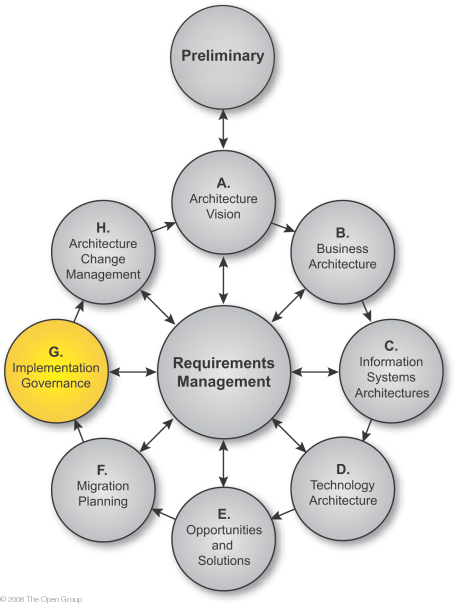| Task: Implementation Governance | |
 |
|
The objectives of Phase G are:
|

ApproachIt is here that all the information for successful management of the various implementation projects is brought together. Note that, in parallel with Phase G, there is the execution of an organizational-specific development process, where the actual development happens. To enable early realization of business value and benefits, and to minimize the risk in the transformation and migration program, the favored approach is to deploy the Target Architecture as a series of transitions. Each transition represents an incremental step towards the target, and each delivers business benefit in its own right. Therefore, the overall approach in Phase G is to:
Phase G establishes the connection between architecture and implementation organization, through the Architecture Contract. Project details are developed, including:
Implementation governance is closely allied to overall architecture governance, which is discussed in Part VII, Architecture Governance . A key aspect of Phase G is ensuring compliance with the defined architecture(s), not only by the implementation projects, but also by other ongoing projects within the enterprise. The considerations involved with this are explained in detail in Part VII, Architecture Compliance . |
| Supporting Materials |
|---|
The Open Group gratefully acknowledge Capgemini for the creation of the Eclipse Process Framework Method Plugin for TOGAF9. Downloads of the TOGAF documentation, are available under license from the TOGAF information web site. The license is free to any organization wishing to use TOGAF entirely for internal purposes (for example, to develop an information system architecture for use within that organization). A book is also available (in hardcopy and pdf) from The Open Group Bookstore as document G091.
Copyright © 1999-2009 The Open Group, All Rights Reserved |